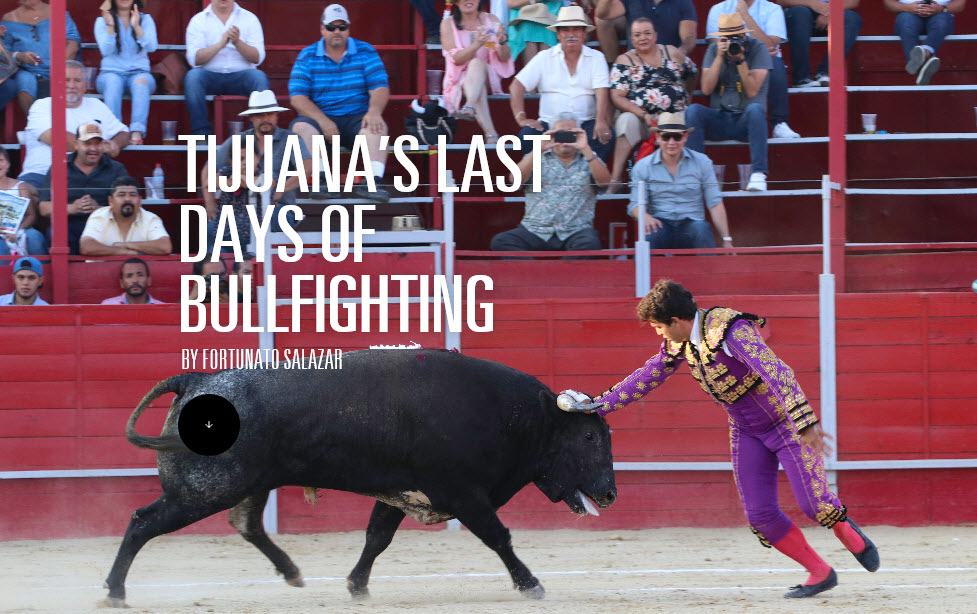Lagravere is the youngest bullfighter in history to earn the official title of matador; prior to him, that record had been held for over 50 years by Luis Miguel Dominguín, the man immortalized in Hemingway’s The Dangerous Summer. Growing up under his father’s tutelage, Lagravere first fought in front of audiences at the age of six, and has known he wanted to fight since he was four. That afternoon, he worked close to the bull, comfortably professional: every inch the prodigy.
 Michelito Lagravere. Photo by: Jose Pelayo
Michelito Lagravere. Photo by: Jose Pelayo
He swooped in for the kill, quick and agile, his sword bouncing off the bone twice. On the third hit, the bull dropped hard to the dirt. It was a clean kill as far as bullfighting goes, and certainly better those managed by the two more senior toreadors who preceded him that day.
Antonio Garcia, billed as El Chihuahua, had entered the arena first with a bandage on his right hand. He’d sustained the injury the day before at a vineyard south of town in an informal mano a mano bout against his competitor, Alfredo Rios, a.k.a. El Conde, who would follow him in Tijuana the next day. At the vineyard on Saturday, where seats at the private ring easily netted $300, he’d finished off his bull with one plunge, despite his injury. In Tijuana he didn’t fare as well, landing the sword in the bull’s flank and stalking the wounded animal around the ring, jabbing at its neck again and again until it toppled. El Conde’s kill in Tijuana went even worse. He brought the bull down but failed to kill it; it fell to one of his subordinates to come out and finish the job with a short sword.
I watched from the stands alongside Armenui Avakian, whose family has owned the Hotel Caesar in downtown Tijuana for over five decades. When bullfighting still thrived in Mexico through the latter half of the last century, the hotel was the accommodation of choice for matadors and their retinues (it’s also where the eponymous salad was invented). Avakian, in her thirties, grew up around bullfighters. “Disgraceful. My father would have been appalled,” she said, echoing a consensus among critics and fans that the sport isn’t what it used to be.
